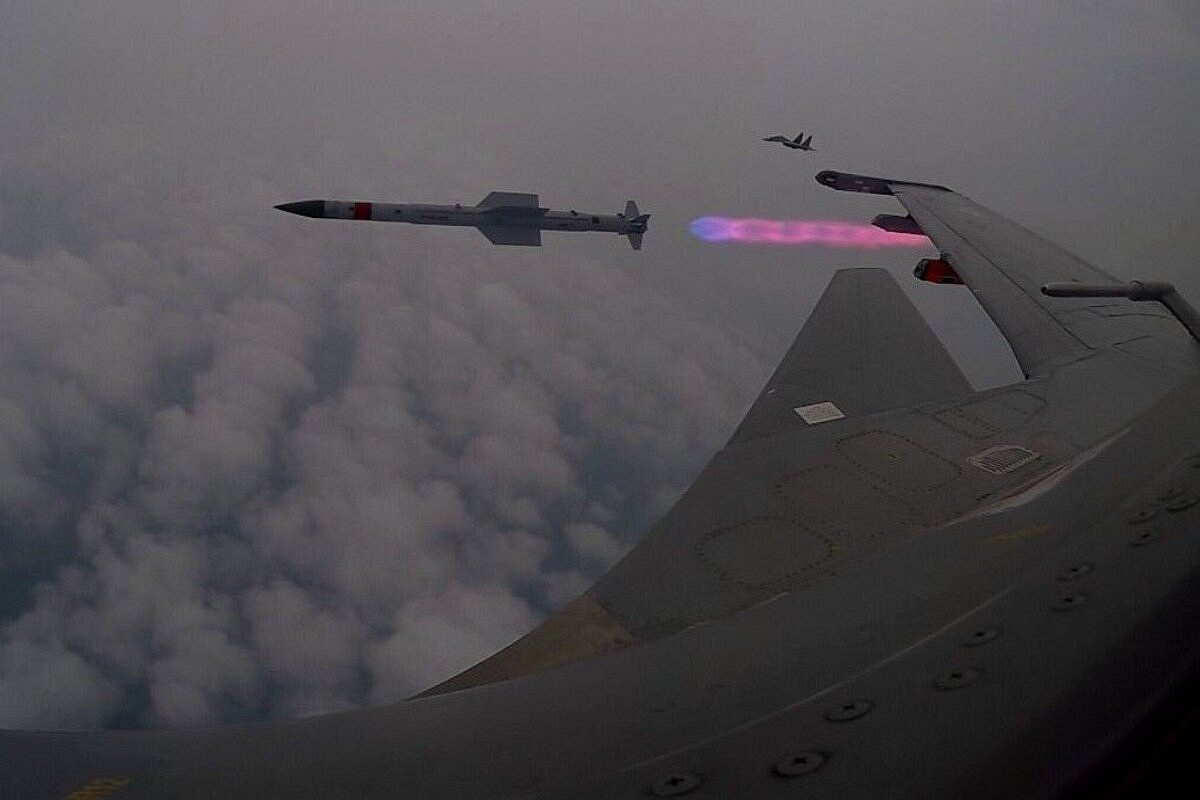Context
India Set To Test 160 km Range Astra Mk-2 Missile This Month, Astra Mk-3 By Year End: Report

The Astra Mk-I missile tested from a Su-30 fighter of the Indian Air Force
India will test the Astra Mark-2 beyond-visual-range-air-to-air missile this month, a report in the Times of India says.
The report says that the "first live launch" of the missile will be conducted from a Su-30 MKI fighter of the Indian Air Force.
It adds that Astra Mark-1 will also be tested this month with an indigenous seeker "instead of the existing Russian AGAT one."
It notes that Astra Mark-3, which has a range of about 360 kilometres (km), will be tested sometime later this year.
Context: The development of the Astra missile began in 2001.
The Mark-1 version of the missile was tested for the first time in May 2003. Since then, Astra Mark-I has been test-fired multiple times and integrated with Su-30 MKI fighters. Apart from the Su-30 MKIs, it will be integrated with Tejas Mark-1A and upgraded MiG-29s.
The 100-km range Astra Mark-1 has cleared all tests. The government has ordered 248 missiles, including 48 for the Indian Navy, from state-owned Bharat Dynamics Limited.
In 2018, the Defence Research and Development Organisation (DRDO) informed Parliament that it had formally sanctioned the Astra Mark-2 project, although work had begun informally much earlier.
The Mk-2 version is now entering developmental trial.
Why this matters: India is developing the Astra series to replace the expensive Russian, French, and Israeli-origin beyond-visual-range missiles.
Astra Mark-2 has a range of around 160 km.
The new missile will have improved jammer resistance and an indigenous seeker.
The missile will be equipped with a dual-pulse rocket motor, which is critical for its long range.
It must be noted that India is testing the solid-fuelled ducted ramjet (SFDR) technology critical for long-range air-to-air missiles.
Astra Mark-3 is based on the solid fuel-based ducted ramjet propulsion, the Times of India report adds.
The SFDR propulsion system, which was also tested in 2019, is critical to the missile's performance in the terminal phase.
The development of SFDR technology will enable India to make its own long-range air-to-air missile, which could mirror the capabilities of the best missiles in this class, like MBDA’s Meteor, which the Indian Air Force uses on its Rafales.
The Meteor missile also depends on its ramjet propulsion for "more energy to maneuver during the endgame of the engagement."
"The ramjet motor [propulsion system] provides the [Meteor] missile with thrust all the way to target intercept, providing the largest No-Escape Zone of any air-to-air missile," the literature on the missile on the MBAD website reads.
The latest test of SDFR technology was conducted in April this year. The technology had also been tested in March and December 2021.
Support Swarajya's 50 Ground Reports Project & Sponsor A Story
Every general election Swarajya does a 50 ground reports project.
Aimed only at serious readers and those who appreciate the nuances of political undercurrents, the project provides a sense of India's electoral landscape. As you know, these reports are produced after considerable investment of travel, time and effort on the ground.
This time too we've kicked off the project in style and have covered over 30 constituencies already. If you're someone who appreciates such work and have enjoyed our coverage please consider sponsoring a ground report for just Rs 2999 to Rs 19,999 - it goes a long way in helping us produce more quality reportage.
You can also back this project by becoming a subscriber for as little as Rs 999 - so do click on this links and choose a plan that suits you and back us.
Click below to contribute.
Latest